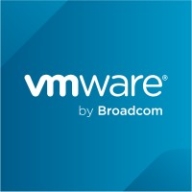

Red Hat OpenShift on IBM Cloud and VMware Tanzu Platform are competing in the cloud-native application development space. Red Hat OpenShift seems to have an advantage in pricing and customer support, while VMware Tanzu stands out for its robust feature set and integrations.
Features: Red Hat OpenShift on IBM Cloud offers strong integration with IBM services, seamless scalability, and comprehensive container orchestration. VMware Tanzu Platform is noted for supporting various Kubernetes distributions, managing both legacy and modern applications, and its microservices architecture which offers flexibility and versatility.
Room for Improvement: Red Hat OpenShift could enhance its feature set beyond IBM Cloud optimization, improve flexibility for multi-cloud deployments, and expand its support for non-IBM platforms. VMware Tanzu might refine its cost structure for small to medium enterprises, simplify integration processes with third-party tools, and enhance user interface intuitiveness for new users.
Ease of Deployment and Customer Service: Red Hat OpenShift's deployment is optimized for IBM Cloud environments, benefiting from IBM's infrastructure and support, while VMware Tanzu provides a flexible deployment model that supports multiple clouds and on-premises installations with proactive customer service, enhancing overall deployment experiences.
Pricing and ROI: Red Hat OpenShift on IBM Cloud provides competitive pricing with features like integrated cloud credits appealing to cost-conscious organizations, enhancing ROI through efficient resource utilization. VMware Tanzu Platform, albeit with higher initial setup costs, promises long-term ROI through comprehensive support and feature offerings suitable for organizations seeking extensive cloud-native solutions.
| Product | Market Share (%) |
|---|---|
| VMware Tanzu Platform | 3.5% |
| Red Hat OpenShift on IBM Cloud | 0.6% |
| Other | 95.9% |


| Company Size | Count |
|---|---|
| Midsize Enterprise | 2 |
| Large Enterprise | 6 |
| Company Size | Count |
|---|---|
| Small Business | 10 |
| Midsize Enterprise | 3 |
| Large Enterprise | 9 |
Red Hat OpenShift on IBM Cloud™ is a fully managed OpenShift service that leverages the enterprise scale and security of IBM Cloud, so you can focus on developing and managing your applications.
Deploy highly available, OpenShift clusters as-a-service with the click of a button on IBM Cloud. Move and build OpenShift-based workloads on a managed public cloud service to gain increased responsiveness, scalability, and reliability.
VMware Tanzu Platform is designed for cloud-native development and management of Kubernetes, CI/CD processes, microservices, and containerized workloads. It supports deployments both on cloud and on-premises, providing centralized management via Mission Control.
VMware Tanzu Platform offers seamless integration with vSphere, ESX, and vSAN, supporting centralized cluster management and lifecycle management. The platform provides a GUI for monitoring CI/CD pipelines and network policies, enhancing multi-tenancy and Day 2 operations. Users can easily manage Kubernetes clusters, monitor applications, and integrate with tools such as GitHub, GitLab, Cloud Foundry, and Azure. It ensures compliance and security for service providers, financial institutions, and businesses.
What are the key features of VMware Tanzu Platform?
What benefits and ROI should users look for in VMware Tanzu Platform reviews?
Industries such as financial institutions, service providers, and businesses requiring rigorous compliance and security deploy VMware Tanzu Platform. These entities benefit from centralized management, streamlined DevOps processes, and integrated tools, enhancing their capabilities in cloud-native developments and containerized workloads.
We monitor all PaaS Clouds reviews to prevent fraudulent reviews and keep review quality high. We do not post reviews by company employees or direct competitors. We validate each review for authenticity via cross-reference with LinkedIn, and personal follow-up with the reviewer when necessary.